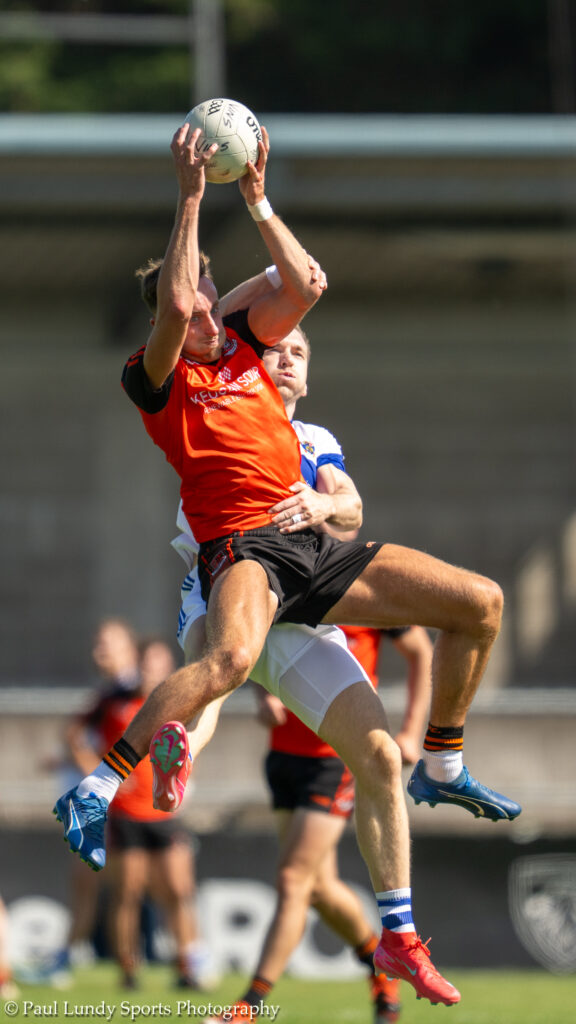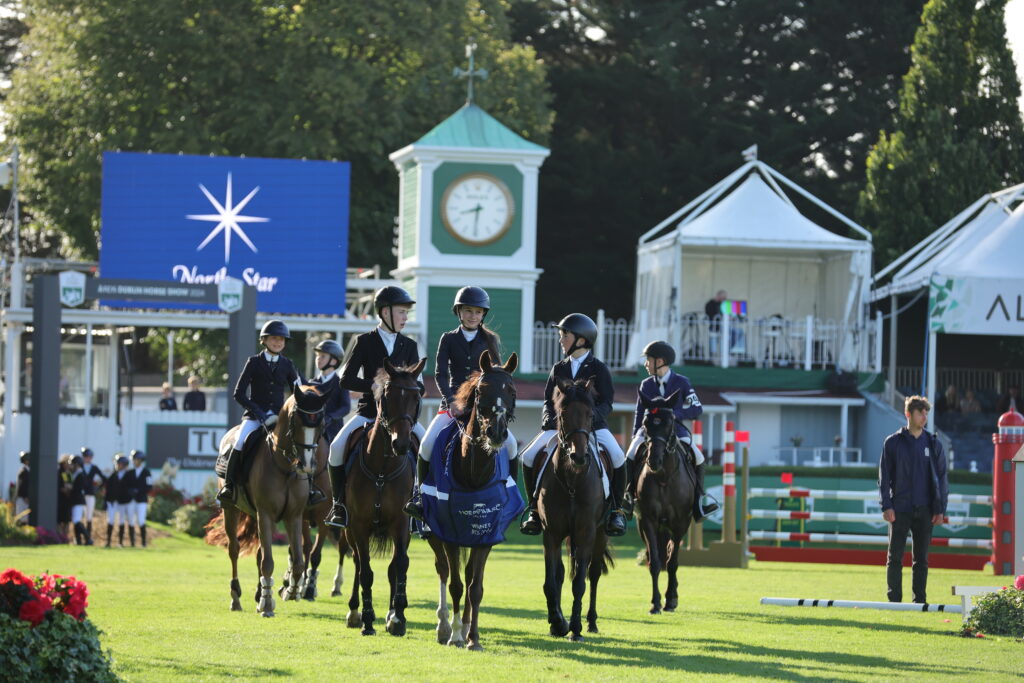
Ireland halts when the Gaelic Athletic Association (GAA) comes to town. On a crisp August afternoon, tens of thousands stream into Croke Park, county flags flapping, faces painted in blue, green, white, or whatever colours their heart dictates. Dublin’s footballers dominate the All-Ireland Championship like few sides anywhere in sport, and you would swear the entire city has pressed pause. Trains are jammed, pubs overflow, and streets outside hum with chatter about who will lift the Sam Maguire Cup or which underdog county might upset the apple cart. And if you have ever forgotten there is a match on, welcome to the M1 or the M50, where traffic crawls for miles and tempers fray faster than a sliotar leaving a hurley. Even the odd viral chant, a cheeky nod to “Joe Biden Mayo for Sam,” sneaks into commentary, keeping fans laughing amid the chaos.
Hurling and Gaelic football, Ireland’s twin national obsessions, are fast, brutal, and utterly thrilling. Take Stephen Cluxton of Dublin, legendary between the sticks. Calm and calculating, he orchestrates attacks with a vision that makes defenders look like they have never touched a sliotar in their lives. Midfielder Brian Fenton, also Dublin, prowls the middle of the pitch with tireless energy, covering every blade of grass, snapping up possession, and distributing the ball like a metronome. On the hurling side, TJ Reid of Kilkenny can score from any angle, any distance, and make it look effortless. These athletes train at ungodly hours, hold down full-time jobs, and still hit the pitch with intensity to rival any professional league. It is mad when you think about it.
Dublin’s reign in Gaelic football, six All-Ireland titles from 2015 to 2020, is the stuff of legend, but it is not without controversy. Critics whinge about how the capital’s wealth, squad depth, and infrastructure tilt the playing field, leaving smaller counties chasing their tails. Yet the drama lies not just in dominance but in resistance. Louth might pull off a stunning Leinster upset, Kerry will frustrate the living daylights out of any opposition, and Mayo will still get the country muttering about another one that got away while fans muse over the meme-worthy moments that accompany their heartbreaks.
At the heart of the GAA is the local club. Every parish and village has one, and they are far more than sports organisations. They are community hubs, lifelines, and social networks. In rural Ireland, where isolation can be profound, these clubs provide structure, mentorship, and purpose. On training nights, pitches hum with laughter, coaching, and the crack of hurling balls. The next generation of stars learns their craft here, and the intensity is real. Athletes pull like dogs, as the O’Donovan brothers, Irish Olympic rowing champions, once described, pushing themselves and their teammates to the limit with grit and determination. Brothers line out against each other, cousins face off in finals, and the craic off the pitch is often as memorable as the scoreline itself.
Even cultural quirks give the GAA its charm. O’Neills, the iconic Irish sportswear brand, made a splash in wider culture when Paul Mescal was spotted at Coachella wearing a pair of their shorts. Social media went ballistic. A humble pair of training shorts got more attention than a mid-season All-Ireland tie. And who could forget the time a club mascot wandered onto a live pitch feed, causing laughter and groans alike? The GAA does not just dominate fields. It occasionally drifts into the wonderfully absurd, and the Irish embrace it with a grin.

Championship season transforms the country. Provincial competitions in Leinster, Munster, Connacht, and Ulster funnel into the All-Ireland series, with drama unfolding at every turn. Elite athletes face off while the nation collectively watches, debates, and celebrates. Dublin may dominate headlines, but it is the hundreds of local clubs, from Kerry to Louth, that sustain the sport, produce future stars, and maintain its connection to local identity. County allegiances, sibling rivalries, and intergenerational mentorship give every match depth far beyond the scoreboard.
The modern GAA also grapples with contemporary challenges. Gender inequality, for example, has been a talking point, though the story is one of progress as much as disparity. Ladies’ Gaelic Football and Camogie have seen growing media coverage, sponsorship, and improved facilities. Stars like Sinéad Aherne of Dublin or Cora Staunton of Mayo demonstrate skill, resilience, and tactical nous equal to their male counterparts. Co-development programs, better coaching access, and televised fixtures are improving visibility and opportunity, while the focus remains on supporting livelihoods, fostering communities, and maintaining the joy and spirit of the game.
Player welfare, fixture congestion, and administrative controversies occasionally make headlines, but these are addressed with the same community-oriented ethos that defines the sport. The GAA balances elite ambition with grassroots responsibility, ensuring that players, male and female alike, can thrive without losing touch with the people and places that sustain the game. The amateur status is not a limitation. It is a framework emphasising personal growth, social connection, and cultural identity.
Sibling rivalries and family legacies are woven into the very fabric of the GAA. Brothers on opposing teams, cousins in semi-finals, and coaches balancing day jobs with evening trainings exemplify the intertwining of personal, communal, and competitive stakes. These narratives are often more compelling than scores themselves, embodying the social and emotional depth of the sport.

Financially, the GAA is modest compared to global leagues. Revenues of around €130 million in 2022 pale beside the Premier League or NFL. Yet its social return is immense. Clubs, youth programs, and community initiatives thrive on these resources, sustaining rural economies and local pride. Amateur athletes may not earn salaries, but the exposure, career opportunities, and personal development the game offers are invaluable.
Ireland’s sporting landscape, urban and rural, is defined by the GAA. Dublin’s dominance, Kilkenny’s hurling prowess, and the occasional viral shorts meme are threads in a larger tapestry. The game shapes the country’s rhythm. Roads clear for matches, towns buzz with anticipation, pubs fill with chatter, and even those stuck on the M1 or M50 grumble through gridlock with a smile, knowing it is all part of the spectacle. From packed Croke Park terraces to village pitches bathed in floodlights, the GAA connects people, generations, and communities in a way few other sports can.
Ultimately, the Gaelic Athletic Association is at the heart of Irish life. From the roar of Croke Park to small village pitches, it fosters pride, camaraderie, and belonging, even when traffic crawls or the team has had a rough run of results. Players and clubs pull like dogs in training, siblings face off with friendly rivalry, and moments of levity, whether a viral O’Neills shorts meme or a mascot wandering the pitch, bring the human side of the sport to the fore. The GAA is about sustaining communities, providing purpose, and offering a space where people come together, laugh, and celebrate shared achievements. It combines serious athleticism with joy, humour, and heart, resonating with those who live and breathe the game. The GAA reminds us that sport can unite, entertain, and inspire, while staying grounded in the places and people that matter most.


